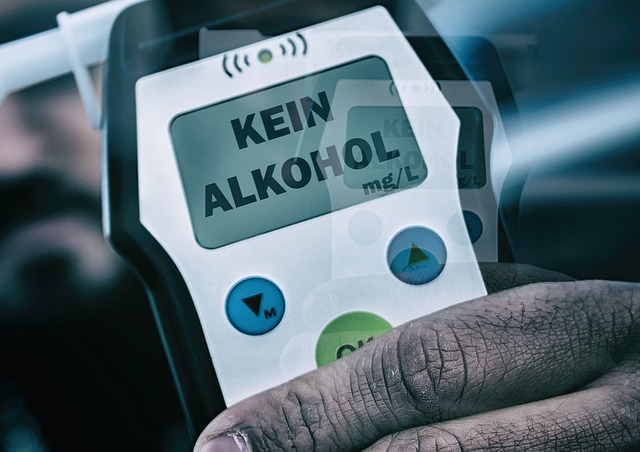Teen driving rehabilitation focuses on understanding and addressing challenges to foster responsible behavior, aiming to prevent future accidents and legal consequences. Evidence-based programs, including counseling, peer mentorship, and skill-building workshops, educate teens about vehicle safety features like anti-lock brakes, airbag systems, and DUI law implications. Advanced safety technologies deter risky behaviors by reducing the likelihood of drunk driving. Successful rehabilitation stories inspire peers to make safer choices, showcasing the impact of education and support in transforming lives and communities. Continuous recovery programs employ group therapy, skills training, and awareness campaigns to prevent recidivism, emphasizing the importance of Vehicle Safety Features and DUI Law education for long-term positive outcomes.
“Teen Rehabilitation: Back on Track for Safe Driving is a comprehensive guide exploring vital steps towards responsible youth transportation. This article delves into key aspects, including understanding teen rehab, assessing the influence of DUI laws, and leveraging vehicle safety features as powerful tools for change.
We examine interventions, support systems, and successful case studies, offering strategies to foster continuous recovery and prevent recidivism among at-risk teens. Discover how these elements interplay in shaping safer roads.”
- Understanding Teen Rehabilitation: A Vital Step Towards Responsible Driving
- The Impact of DUI Laws on Youth and Their Rehabilitation
- Exploring Vehicle Safety Features: A Tool for Change
- Interventions and Support Systems for At-Risk Teens
- Case Studies: Successful Rehabilitation Stories in Action
- Strategies for Continuous Recovery and Preventing Recidivism
Understanding Teen Rehabilitation: A Vital Step Towards Responsible Driving

Rehabilitating teenagers after a driving-related incident is a critical process that fosters responsible behavior behind the wheel. It involves a comprehensive understanding of the challenges teens face, coupled with effective strategies to address underlying issues. This period is essential in shaping their future driving habits and ensuring vehicle safety features are utilized responsibly. By implementing evidence-based programs, we can guide young drivers away from risky behaviors like driving under the influence (DUI) and encourage adherence to traffic laws.
Teenagers, given their relative lack of experience, often require specialized support systems. These programs aim to educate them about the complexities of vehicle safety features, such as anti-lock brakes, airbag systems, and electronic stability control. Equipping them with this knowledge helps teens make informed decisions while driving and promotes a deeper appreciation for DUI law implications. Through counseling, peer mentorship, and skill-building workshops, rehabilitation can empower teenagers to become safe and accountable drivers, ultimately reducing the risk of future accidents and legal consequences.
The Impact of DUI Laws on Youth and Their Rehabilitation

The implementation of stringent DUI laws has had a profound impact on youth rehabilitation, particularly in relation to vehicle safety features. These laws, designed to uphold public safety, have driven innovation in automotive technology, pushing manufacturers to incorporate advanced vehicle safety features as standard. This shift has been instrumental in reducing drunk driving incidents among teenagers, who are statistically more prone to engaging in such risky behavior.
The integration of technologies like automatic emergency braking, lane departure warnings, and advanced airbag systems not only enhances the overall safety of vehicles but also serves as a powerful deterrent for young drivers. As these features become increasingly prevalent, teens are encouraged to prioritize vehicle safety, fostering a culture of responsible driving and potentially reducing the severity of accidents involving underage individuals.
Exploring Vehicle Safety Features: A Tool for Change

In the context of teen rehabilitation and getting their lives back on track, understanding and leveraging vehicle safety features can play a pivotal role. As teens gain more independence, especially behind the wheel, equipping them with knowledge about advanced safety technologies in cars becomes essential. Features like automatic emergency braking, lane departure warnings, and adaptive cruise control not only enhance road safety but also serve as powerful tools to deter risky behaviors, such as driving under the influence (DUI). These systems can detect potential hazards and intervene, reducing the likelihood of accidents caused by distracted or impaired driving.
By familiarizing teens with these vehicle safety features and their implications under the DUI Law, we can foster a culture of responsible driving. It encourages young drivers to adopt safer practices, understanding that technology is on their side, ready to assist in preventing tragedies. This approach combines education and innovation, offering a practical solution to keep teen drivers safe and help them stay on the right track.
Interventions and Support Systems for At-Risk Teens

At-risk teens often need a supportive network to steer them back onto a positive path. Interventions can take many forms, from counseling and therapy to mentorship programs and after-school activities. Family involvement is crucial; parents or guardians play a vital role in encouraging their teen and ensuring they receive the necessary support. Community resources, such as youth centers and rehabilitation facilities, offer structured environments where teens can learn valuable skills and gain access to specialized services.
One important aspect of intervention is educating teens about vehicle safety features and the severe consequences of DUI (Driving Under the Influence). As many at-risk teens may be facing peer pressure or making impulsive decisions, understanding the legal implications and potential risks can be a powerful deterrent. Teaching them about seatbelts, airbags, and other advanced safety systems can empower them to make safer choices, not just behind the wheel but also in their overall decision-making processes.
Case Studies: Successful Rehabilitation Stories in Action

In the realm of teen rehabilitation, success stories often serve as powerful motivators for both participants and their peers. Case studies highlight real-life examples where young individuals have overcome significant challenges, such as substance abuse or reckless driving behaviors, thanks to well-structured programs and supportive environments. One notable example involves a teenager who found themselves behind the wheel under the influence (DUI), a situation that could have had tragic consequences. Through a rehabilitation program focused on vehicle safety features and DUI law education, this individual learned about the importance of responsible driving. They became an advocate for peer pressure resistance, sharing their story to encourage others to make safer choices.
Another inspiring case involves a teen who struggled with substance abuse, which led to impaired judgment and risky behaviors. By participating in rehabilitation, they gained valuable insights into the long-term effects of their actions and learned coping mechanisms to manage cravings. This transformation allowed them to reintegrate into society as a responsible young adult, sharing their experience to raise awareness about addiction and recovery among their peers. These stories demonstrate that with the right support and resources, teens can turn their lives around and become positive role models within their communities.
Strategies for Continuous Recovery and Preventing Recidivism

Teen rehabilitation programmes focused on continuous recovery often incorporate a range of strategies tailored to prevent recidivism, ensuring young individuals stay on track after completion. These include group therapy sessions that foster peer support and accountability, encouraging open communication about challenges and successes in maintaining sobriety. Additionally, skills training workshops equip teens with tools for stress management, conflict resolution, and healthy decision-making, empowering them to navigate triggers and high-risk situations effectively.
Another critical aspect is educating teenagers about the consequences of risky behaviors, such as drunk driving. Implementing Vehicle Safety Features and raising awareness under DUI laws can serve as powerful deterrents. By instilling a deep understanding of the potential impacts on their future—including legal repercussions, health risks, and long-term consequences for personal growth—rehab participants are motivated to make healthier choices and stay committed to their recovery journey.
Teen rehabilitation programs, bolstered by advanced vehicle safety features and stringent DUI laws, offer a comprehensive approach to addressing youthful impaired driving. By combining education, support systems, and innovative technology, we can empower at-risk teens to make responsible choices on the road, fostering continuous recovery and reducing recidivism rates. The successful case studies highlighted in this article underscore the transformative potential of these strategies, paving the way for a safer future for our youth.






